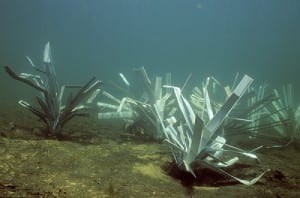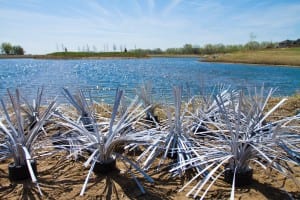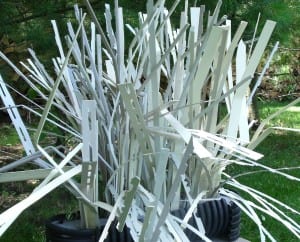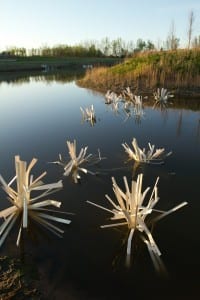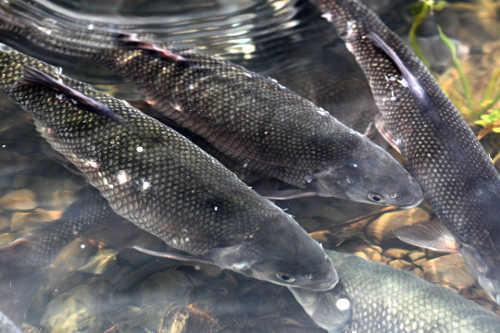 |
| Clear Lake hitch during the April 2011 migration. Photo by Ed Oswalt. |
LAKE COUNTY, Calif. – One of Clear Lake’s natives species is the focus of new state and federal Endangered Species Act applications submitted on Tuesday.
Estimating that the Clear Lake hitch’s numbers have plummeted from millions to, more recently, a few thousand, the Center for Biological Diversity on Tuesday petitioned to protect the hitch – a large minnow found only in Clear Lake and its tributaries – under both the federal Endangered Species Act and the state’s Endangered Species Act.
The fish, once a staple food for the region’s Pomo tribes, has been tracked closely in recent years by local tribes and the Chi Council for the Clear Lake Hitch. As the fish’s habitat has dramatically changed their numbers have seen a precipitous decline. Dozens of unique habitat models at fishiding.com
The Clear Lake hitch has long been an important part of the lake’s natural and cultural heritage of Clear Lake but, if it’s to survive for future generations, Jeff Miller of the Center for Biological Diversity said the fish needs to be put on the pathway to recovery, which means it needs to be protected and have its habitat restored.
Miller said the center has been looking at the hitch for about five years.
There is precedent for the disappearance of a local fish species – Miller pointed out that the Clear Lake hitch’s closest relative, the Clear Lake splittail, became extinct in the 1970s through habitat alterations that dried out spawning streams and barriers that prevented fish migration.
“Fisheries and biologists have been warning about the Clear Lake hitch going the same way,” he said. The fish also has been on a California Department of Fish and Game watch list for decades.
Over the last couple of years, with the continuing decline in spawning runs and the dropping number of fish, Miller said the group decided to act and give the fish “a fighting chance.”
The Center for Biological Diversity’s petition proposes recovery measures for hitch, such as removing or retrofitting barriers to fish migration, improving instream water flows, restoring fish to former spawning streams and reducing predation by invasive fish near the mouths of spawning streams.
The center also is proposing that the hitch be reintroduced into Blue Lakes after it’s determined what caused the fish population there to die. He said so far he’s not aware of studies being done on the previous Blue Lakes hitch population.
“I think it’s necessary,” said Paula Britton, environmental director of the Habematolel Pomo of Upper Lake, of the proposed Endangered Species listing.
Britton’s work for the tribe includes study of the hitch. One of their projects includes tagging the fish, – she said they’re still tabulating results from last year’s tagging work – and they hope to initiate habitat surveys.
At Big Valley Rancheria, Environmental Director Sarah Ryan said the tribe has given input on the application, and has provided Miller and the Center for Biological Diversity information over the past few years, as has the Chi Council.
“I think it’s probably a positive step because the hitch are declining pretty badly at this point,” she said.
Peter Windrem, president of the Chi Council, said the group was unaware that the Center for Biological Diversity was planning to file the petitions for protection.
He said the group was meeting Wednesday afternoon, and he deferred further comment until he had a chance to discuss the matter with the rest of the council.
Tom Smythe, an engineer with Lake County Water Resources who also sits on the Chi Council, said the petitions weren’t a complete surprise. “There’s been discussion of this for a couple of years.”
He said there are pluses and minuses to a potential Endangered Species listing for the Clear Lake hitch.
On the plus side, it could provide funding for habitat restoration for the hitch, which isn’t a game fish and so doesn’t have much of that funding available. Miller also believes projects like the Middle Creek restoration would likely gain funding as a result of the listing.
Among the minuses, said Smythe, is the potential for the permitting process to become much worse, “even if you’re trying to help the habitat.”
Theoretically, the listing shouldn’t add complications to the Middle Creek restoration project, although there is the possibility, Smythe said, adding that a listing would potentially affect any project that impacts local streams.
Miller said that any projects under way currently, whether beneficial or harmful, would likely be unaffected due to the time it will take for a listing decision to be made.
He said restoration projects, scientific monitoring and tribal harvests of fish “are usually permitted within the framework of listings” as long as there is a conservation component to them.
Changes in habitat threaten fish
“The Clear Lake basin and its tributaries have been dramatically altered by urban development and agriculture,” the Center for Biological Diversity states in its petitions. “Much of the former stream and wetlands habitat suitable for hitch has been destroyed or degraded, and barriers that impede hitch migration have been built in many streams which formerly had spawning.”
The petitions continue, “Hitch can no longer reach the majority of former spawning areas, and are forced to spawn opportunistically in ditches and wet meadows during high flows. In recent years, hitch have been able to spawn in significant numbers in only two streams, Kelsey Creek and Adobe Creek, both located in the Big Valley drainage.”
The hitch spawn has become “sensitive to very localized events,” and, as such, “a toxic spill or water use issues of limited size could results in spawn failure for the entire population,” according to the petitions.
The petitions found no local ordinances or regulations to protect the fish.
While the 2008 Lake County General Plan’s goals and policies seek to ensure the protection of sensitive species, limit encroachment into sensitive habitats and protect riparian corridors, the petitions suggested it didn’t go far enough.
The center said the general plan “only superficially mentions the Clear Lake hitch as a state species of concern. The plan contain goals and policies aimed at protecting water quality and biological resources, but some of the policies are couched in qualifiers such as ‘should’ or ‘shall consider’ and ‘whenever possible.’”
Historically, the hitch spawned in all of Clear Lake’s tributaries. Now, however, due to a variety of impacts – changes in creek habitat, migration barriers, water pumping, in-channel mining, pollution and predation by non-native fish – they’re found spawning only in Kelsey and Adobe creeks.
The Endangered Species Act petitions also raise another future concern. “Increased drought and rapid climate change due to global warming will likely accelerate this trend, causing further spawning failures.”
In the last spring hitch run, Ryan said they found that while the hitch were spawning, there was not enough water in the creeks, such as Adobe Creek, for them to make it back to Clear Lake.
Ryan said that an Endangered Species listing could lead to changed water usage in the creeks, making sure that the fish have the water they need.
“The intent is not to stop projects and not to stop progress and things that are already being planned,” said Ryan, pointing to the Endangered Species Act’s goal of preserving heritage species populations.
If there are actions or activities that are affecting hitch being able to survive and thrive, Ryan said they will have to be modified in conjunction with the act.
Smythe said he’s noted a decline in hitch populations over the past 25 years.
During the spring spawn in 2011, which was a wet year, Smythe said the hitch were seen in streams where their presence hadn’t been noted in years.
However, this year, with late rain – and less rain overall – the hitch were harder to find, he said.
“We don’t really have good data this year because it’s hard to see them in a muddy stream,” Smythe said, adding that, overall, the hitch spawn “looked pretty poor.”
The Endangered Species listing process “takes a lot longer than it should,” said Miller.
There will be a 90 day finding, but Miller said that step rarely is as quick as three months. After that, there is a yearlong status review that’s similar in both the state and federal process.
During the status review, Miller said the government will collect information from stakeholders, hold public hearings and take public comment, followed by a Federal Register notice if the listing is granted.
“Optimistically, you’re looking at a couple of years,” Miller said.
Email Elizabeth Larson at elarson@lakeconews.com .
ELIZABETH LARSON


 The dam at Leaser Lake in Lynn Township has undergone major upgrading after the lake was drained for repairs. Man made fish habitats dot the interior of the lake bed. (Douglas Kilpatrick, SPECIAL TO THE MORNING CALL / February 12, 2012)
The dam at Leaser Lake in Lynn Township has undergone major upgrading after the lake was drained for repairs. Man made fish habitats dot the interior of the lake bed. (Douglas Kilpatrick, SPECIAL TO THE MORNING CALL / February 12, 2012)

